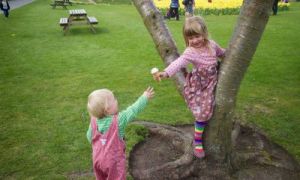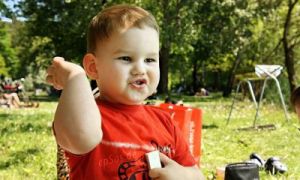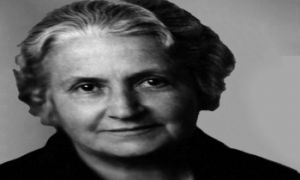Young children who are not able to develop age-appropriate strategies for regulating aggressive behaviour are at high risk for engaging in chronic aggressive and antisocial behaviour which might adversely affect all aspects of their future lives. Also physically aggressive behaviour has the potential to disrupt the learning environment and even cause harm to others, both children and adults, in the setting. The following article provides information on Strategies To Deal With Specific Types Of Physical Aggression, General Strategies and Long Term Strategies For Physical Aggression and more.
What Is Aggression?
Behaviour Aggression is any behaviour that results in physical or emotional injury to a person or animal, or one that leads to property damage or destruction. Aggression can be verbal or physical. Physically aggressive behaviour can occur in various forms, whether it is slapping, grabbing, screaming, punching, kicking, spitting, biting, threatening, teasing, or a variety of other actions.
Strategies To Deal With Specific Types Of Physical Aggression
Researchers have also identified types of aggressive behaviour according to origin. Here are the four types including strategies to deal with children demonstrating such aggression.
Accidental Aggression
This includes action caused by pure accident when without intending to, a child hurts another child. Stepping on someone’s foot while playing tag, hitting another child while putting an arm through a coat sleeve, or knocking over someone’s blocks while walking through a tight space are all examples of accidental aggression.
The most effective way to defuse the situation is by identifying the wronged child’s feelings and explaining that this was an accident. In fact, an educator can go further to point out to the ‘aggressor’ the impact the action had on the other child and to ask the ‘aggressor’ to help repair the damage, like pitch in to rebuild the clock tower
Expressive Aggression
This includes aggressive actions because the action feels good. The child, however, does not aim to hurt someone. Indeed, when carried out safely with supervision, kicking, pounding, throwing, and knocking down are appropriate physical activities for children. They often enjoy these physical activities probably because it helps them release excess physical energy. However, problems occur when children go beyond these safe situations to gain pleasure from ones that can cause damage to others.
Redirection is usually the most effective way to deal with this type of physical aggression. This will allow the child to continue the pleasurable physical movement while changing the situation so that it does not pose any harm to others. For example, the child who is knocking down other children’s sandcastles needs to be redirected to knock down their sand structures.
Hostile Aggression
This aggression is aggression done on purpose to hurt someone physically. The children who use hostile aggression experience satisfaction from seeing others hurt. Bullying is the most common form of this type of physical aggression.
Children must be told that hostile behaviour will not be tolerated. Your actions need to support that statement by demonstrating clear boundaries and consistent expectations. Rules should be explained to the children and strictly enforced but they should be simple and few. In the long run, teach social skills to the aggressor like ways to join in a game or facilitate friendships between pairs of children who are having difficulty forming positive peer relationships.
Instrumental Aggression
This type of physical aggression occurs when children fight over objects, territory or rights, and in the process, someone gets hurt. For example, when two children are playing with paint or in the sandbox, if both think they are the first to the paintbrush or sand pail, their goal is to gain control over the tool or the material. In the process of struggling to gain control, someone gets hurt. Most aggression exhibited by children between two and six is instrumental, with the majority of outbursts happening in fights over materials and toys.
To deal with instrumental aggression, educators can learn, practice, and use conflict mediation skills:
- Step 1: Initiate the mediation process.
- Step 2: Clarify each child’s perspective.
- Step 3: Summarize.
- Step 4: Help children generate alternatives.
- Step 5: Help children agree on a solution.
- Step 6: Reinforce the problem-solving process.
- Step 7: Help children follow through on their agreement.
For example, if two children want to eat the same orange, ask both to listen to each other. Clarifying each child’s perspective may turn out that one of them wants to eat it while the other wants the peel to squeeze. Summarize the respective positions and ask both what might be done – perhaps one child eating the segments and the other taking the peel to play. If needed, reinforce the problem-solving process and support the children in implementing their solutions.
General Strategies For Dealing With Physical Aggression
Sometimes educators need to quickly defuse a situation and may not have enough reaction time to examine the cause or type of aggression. Here are a few strategies2 to widen your behaviour management toolkit along with situations wherein they may be used.
- Redirection - If a child is snatching away a toy from another, redirect the child’s attention to a different toy or activity that is more acceptable.
- Reasoning - If a child is breaking crayons and throwing them at the other children, speak to him about the effect that it is hurting other children and remind him of the rules. If the behaviour doesn’t stop, other strategies may be used.
- Time Out - If a child is biting others, they are removed from the situation and allowed to calm down.
- Elimination - Eliminate aggressive materials. Do not purchase toy weapons for your setting or allow children to bring them from home.
- Natural & Logical Consequences - Actions result in consequences whether negative or positive. If the consequence is not too severe, let natural consequences happen. If not, create a consequence (Logical) that is appropriate for the behaviour. For example, if a child continues to karate kick the playhouse, even though he has been reminded several times about the rules, let logical consequences ensue like not being allowed access to the playhouse.
Long Term Strategies To Manage Physical Aggression
- Modelling - modelling nonaggressive behaviour can go a long way in showing children how to manage their feelings. Be calm when dealing with children who are upset. Keep your voice level and firm, your movements controlled, and look at the children.
- Planning - Manage materials to minimize potential frustration among children. Provide multiple items of popular items like specific toys, paint easels and paintbrushes, and tricycles. This is especially true for young toddlers who have limited ability to wait and share. Also, avoid overstimulation - too many choices and options overwhelm the children. Allow them an appropriate number of choices.
- Teaching self-regulation - If the destructive tendencies arise out of rage or frustration, help children learn calming strategies like deep breathing or counting. Also, children need to express strong feelings but help them find safe ways to do this. For example, if a child is tired and behaving in a way that can hurt others, physically remove them from the situation to a designated space to give the child an opportunity to calm down. Such a space can be a tent equipped with a heavy blanket or even a corner in the classroom that has a bean bag.
- Positive reinforcement - Praise children when their behaviour is appropriate like when they stop throwing around objects have fixed something that they broke or even calmed down on their own. This is a fundamental principle of positive guidance which involves encouraging desirable behaviour through praise or attention
- Notice - Observe children carefully so that you can notice problems when they are small before they reach the explosion point. Trust your training and experience to pick up potential danger signals even when something major has not happened. Work together with other staff, parents, and, if possible, the child to make a plan for stopping trouble sooner rather than later.
- Awareness - Agree ahead of time with the parents and/or your supervisor about how to handle physical aggression and what you are and are not authorized to do. Your centre’s policies and procedures, for example on biting, can be a good guide on how the staff is expected to handle instances of physical aggression in children.
Finally be aware that aggressive behaviour, however, can reflect deficits in a number of areas and can be exacerbated by co-occurring problems3. So for instance, delays in language development may hamper communication of needs, impair the socialization of empathy and emotion regulation, and negatively impact peer relations. In fact, reducing problems with aggression in the context of a developmental delay would require interventions targeted at the delay, not simply at reducing the aggressive behaviour. Such situations will require educators to work with other professionals like early intervention specialists, inclusion professionals and therapists.
Further Reading
Developing an understanding of stages of behaviour is important as this determines how a child's behaviour and understanding is developing typically for their age. For more information, please read the following: Stages Of Behaviour
The strategies listed will enable you to maintain responsible behaviour and help you to prevent undesirable behaviour, for each child. For more information, please read the following: Behaviour Management In Childcare
Children who display challenging behaviour don’t usually do so ‘just because they want to’. There’s often a reason behind their behaviour or it might be their only way of telling you something’s wrong. All behaviour is a form of communication. Therefore, it’s essential that you understand the causes of challenging behaviour. For more information, please read the following: Supporting Children With Challenging Behaviour
When a child displays challenging behaviours, there can be significant impacts for both children and adults that may contribute to educators feeling overwhelmed. This article will help you to develop a behaviour management plan which can be used during the hard times. For more information, please read the following: Behaviour Management Plan
References:
Aggressive Behaviour Of Children, University Of Nebraska
Development of Physical Aggression from Early Childhood to Adulthood, Encyclopedia Of Early Childhood


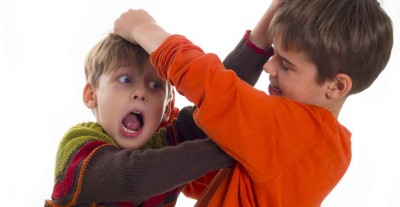




 Working as a childcare professional can be a challenge especially when dealing with behavioural problems which may arise. The techniques we use when dealing with
Working as a childcare professional can be a challenge especially when dealing with behavioural problems which may arise. The techniques we use when dealing with There are different types of behaviour that children can display and sometimes it can be hard to manage, especially if a child is having behavioural
There are different types of behaviour that children can display and sometimes it can be hard to manage, especially if a child is having behavioural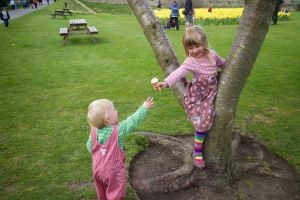 As a parent, your behavioural expectations of your child can be higher than what is actually developmentally appropriate for your child's age.
As a parent, your behavioural expectations of your child can be higher than what is actually developmentally appropriate for your child's age.
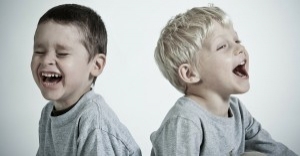 As Educators, there will be many instances where you will need to write about a child's behaviour. For a behaviour management plan, assessments, half-yearly or
As Educators, there will be many instances where you will need to write about a child's behaviour. For a behaviour management plan, assessments, half-yearly or As Educators when communicating with Parents (through verbal or non-verbal communication), there will be times where we need to discuss issues or concerns that may
As Educators when communicating with Parents (through verbal or non-verbal communication), there will be times where we need to discuss issues or concerns that may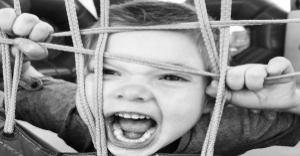 Challenging Behaviour is when a child does something that hurts themselves and/or other people.
Challenging Behaviour is when a child does something that hurts themselves and/or other people.
 As part of your child's development it is normal for your child to have anxiety and fears. A baby commonly shows a fearful sign to
As part of your child's development it is normal for your child to have anxiety and fears. A baby commonly shows a fearful sign to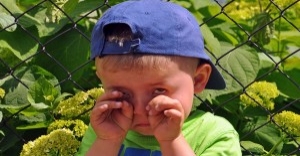 It's always difficult to bring up behavioural issues with parents, it can be nerve wrecking to tell a parent that their child misbehaves but that
It's always difficult to bring up behavioural issues with parents, it can be nerve wrecking to tell a parent that their child misbehaves but that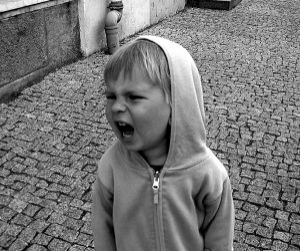 All children deal with anger on a daily basis. Thinking about it as a child, there is a lot to be angry about. Elder people
All children deal with anger on a daily basis. Thinking about it as a child, there is a lot to be angry about. Elder people It is important to understand that your child behaviour problems could not just be from attention seeking. There are many factors to take into consideration
It is important to understand that your child behaviour problems could not just be from attention seeking. There are many factors to take into consideration